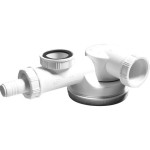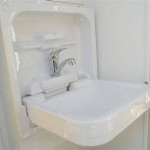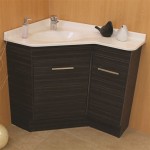What Is Another Word For A Bathroom Vanity? Exploring Synonyms and Related Terms
The term "bathroom vanity" is widely understood as the combination of a sink and storage unit found in most bathrooms. However, language offers a rich tapestry of alternative words and phrases that can be used to describe this essential piece of bathroom furniture. Exploring these synonyms and related terms not only expands one's vocabulary but also allows for more precise communication when discussing bathroom design, remodeling, or purchasing decisions. Furthermore, understanding the nuances of each term can help in navigating the diverse offerings available in the market, from traditional to contemporary styles.
This article delves into the various synonyms and related terms for "bathroom vanity," examining their connotations and contextual appropriateness. By understanding these alternatives, individuals can engage in more informed discussions with designers, contractors, and retailers, ensuring that their specific needs and preferences are accurately conveyed.
Washstand: A Classic Alternative
One of the most common and historically relevant synonyms for a bathroom vanity is "washstand." This term harkens back to an era before built-in plumbing was commonplace. A washstand originally referred to a piece of furniture designed to hold a basin and pitcher of water, used for washing before the advent of running water. While modern bathroom setups have evolved significantly, the term "washstand" still carries a sense of traditional elegance and can be used to describe vanities that evoke a similar aesthetic. Washstands are frequently characterized by exposed legs and a less enclosed design than contemporary vanities. They often feature simple lines and emphasize the basin as a focal point. The choice between "washstand" and "vanity" often depends on the desired stylistic emphasis – "washstand" leans towards a vintage or antique feel, while "vanity" is a more generic and contemporary term.
The term "washstand" can also be employed to differentiate between vanities that offer different levels of storage. A simple washstand might only consist of the basin and minimal shelving or a towel rack. In contrast, a more elaborate vanity might include drawers and cabinets for storing toiletries and other bathroom essentials. Therefore, when specifying a "washstand," it is prudent to clarify the desired storage capacity to avoid any misinterpretations.
Furthermore, the material composition of a washstand can also be a distinguishing factor. Historically, washstands were often crafted from wood, showcasing intricate carvings and elegant finishes. Modern washstands may incorporate materials like metal, glass, or stone, but the association with wood remains strong. Therefore, specifying the material preference is crucial when using the term "washstand" to ensure consistency with the overall bathroom design.
Sink Cabinet: Emphasizing Functionality
"Sink cabinet" is a more functional and descriptive term, highlighting the cabinet aspect of the bathroom vanity. This term directly underscores the primary role of the unit – to house and support the sink while providing storage space. "Sink cabinet" is particularly useful when describing vanities that prioritize storage capacity and organization. It is less evocative of a particular style than "washstand" and focuses more on the practical benefits of the unit.
When using "sink cabinet," it is important to specify the dimensions and configuration of the cabinet to ensure it meets the user's needs. For example, the number of drawers, the presence of shelving, and the overall size of the cabinet should be clearly articulated. This is especially relevant in small bathrooms where space is limited and efficient storage solutions are paramount.
The term "sink cabinet" can also be used to distinguish between different types of vanity installations. For example, a "floating sink cabinet" refers to a vanity that is mounted to the wall, creating a more open and airy feel. Conversely, a "freestanding sink cabinet" sits directly on the floor, offering more traditional stability and a wider range of design options. Therefore, the term "sink cabinet" can be modified with adjectives to provide more specific information about the type of vanity being considered.
Bathroom Console: A Blend of Style and Function
"Bathroom console" is another synonym for a bathroom vanity, often used to describe units that blend style and function. A console typically features a countertop with a sink, supported by legs or a framework rather than a fully enclosed cabinet. This design offers a more open and airy aesthetic, similar to a washstand but often with a slightly more contemporary feel. Bathroom consoles can be made from a variety of materials, including metal, wood, and stone, and they often incorporate decorative elements to enhance their visual appeal.
The term "console" suggests a certain level of sophistication and attention to detail. Bathroom consoles are often chosen for their aesthetic value as much as their functional benefits. They can serve as a focal point in the bathroom, adding a touch of elegance and style. However, it is important to note that consoles may offer less storage space than traditional vanities with fully enclosed cabinets.
When specifying a "bathroom console," it is important to consider the overall design of the bathroom and choose a console that complements the existing décor. The material, finish, and style of the console should be carefully selected to ensure a cohesive and harmonious look. Furthermore, the size and placement of the console should be carefully considered to optimize both functionality and visual appeal.
Beyond these primary synonyms, a few other related terms can be used to describe bathroom vanities, depending on the specific context. These include:
- Vanity Unit: This is a more generic term that simply refers to the combination of a sink and storage unit.
- Lavatory Cabinet: This term is often used in commercial settings, referring to the cabinet that houses the lavatory (sink).
- Dressing Table (with sink): This term is used when the vanity is also intended for use as a dressing area, with features like a mirror and ample countertop space.
The choice of which term to use ultimately depends on the specific context and the desired level of precision. Understanding the nuances of each term allows for more effective communication and a better understanding of the diverse options available in the market.
In summary, while "bathroom vanity" is a widely accepted and understood term, a variety of synonyms and related phrases can be used to describe this essential piece of bathroom furniture. "Washstand" evokes a classic and traditional feel, "sink cabinet" emphasizes functionality and storage, and "bathroom console" blends style and function. By understanding the nuances of these terms, individuals can engage in more informed discussions with designers, contractors, and retailers, ensuring that their specific needs and preferences are accurately conveyed.

Bathroom Vanity Vs Cabinet Is There A Difference

Everything You Need To Know About Bathroom Vanities

Bathroom Vanity Tops And Sink How To Choose A Countertop

Everything You Need To Know About Bathroom Vanities

What Is A Vanity Unit And It Made Of

Everything You Need To Know About Bathroom Vanities

What Types Of Bathroom Vanity Materials Should You Use Newsnews

What Is The Standard Bathroom Vanity Height Size Guide

How To Choose A Bathroom Vanity 5 Top Considerations

Ravenna 60 Single Sink Small Bathroom Vanity Set Homebeyond







